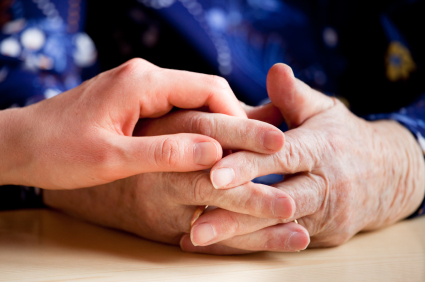Mental Illness Associated with 10 Years Lost Life Expectancy
Severe mental illness is one of the leading causes of death worldwide. Recently researchers led by E.R. Walker performed a meta-analysis of all cohort studies comparing people with mental illness to non-ill populations. They used five databases to find 203 eligible studies from 29 countries. Their findings, published in the journal JAMA Psychiatry in 2015, show that people with mental illness have a mortality rate 2.22 times higher than people without mental illness. People with mental illness lose a potential 10 years of life compared to those without severe mental disorders. The researchers estimated that 14.3% of deaths worldwide are attributable to mental illness.
Editor’s Note: Comorbid cardiovascular illness accounts for a large part of the disparity in life expectancy between people with and without mental illness. Those at risk for serious mental illness should pay close attention to their cardiovascular as well as psychiatric risk factors.
Childhood Adversity Associated with Shorter Telomeres
 Telomeres sit at the end of DNA strands and shorten with each cell replication. Shorter telomeres are associated with aging and an increase in multiple medical and psychiatric disorders. New research draws connections between the production of mitochondrial DNA, telomere length, the experience of childhood adversity, and mental illness.
Telomeres sit at the end of DNA strands and shorten with each cell replication. Shorter telomeres are associated with aging and an increase in multiple medical and psychiatric disorders. New research draws connections between the production of mitochondrial DNA, telomere length, the experience of childhood adversity, and mental illness.
Researcher Audrey Tyrka and colleagues divided 290 healthy adults into four categories based on whether or not they had experienced adversity in childhood and whether they had been diagnosed with a mental illness in their lifetime, including depression, anxiety, and substance abuse. The researchers also analyzed the participants’ telomere lengths and the copy number of their mitochondrial DNA. Both stressful events in childhood (such as maltreatment or the loss of a parent) and a history of mental illnesses (depression and anxiety) were associated with shorter telomeres and higher mitochondrial DNA copy numbers, a measure of cellular aging. Substance abuse was associated with higher mitochondrial DNA copy numbers.
Editor’s Note: This research replicates earlier findings that adversity is associated with shortening telomeres. The finding that mitochondrial DNA could play a role in the long-term effects of early life adversity and mental illnesses is new.
Statins Can Prevent Cardiovascular Risk in Patients with Mental Disorders
 People with major mental disorders such as schizophrenia and bipolar disorder are at increased risk for medical symptoms including overweight, obesity, high cholesterol or triglycerides, diabetes, and the metabolic syndrome, all of which increase risk of cardiovascular disease (heart attack), cerebrovascular disease (or strokes), and other medical difficulties. In a 2013 review article in the journal Bipolar Disorders, researcher Chittaranjan Andrade discussed the use of statins to prevent cardiovascular events in people with major mental disorders.
People with major mental disorders such as schizophrenia and bipolar disorder are at increased risk for medical symptoms including overweight, obesity, high cholesterol or triglycerides, diabetes, and the metabolic syndrome, all of which increase risk of cardiovascular disease (heart attack), cerebrovascular disease (or strokes), and other medical difficulties. In a 2013 review article in the journal Bipolar Disorders, researcher Chittaranjan Andrade discussed the use of statins to prevent cardiovascular events in people with major mental disorders.
Statins decrease lipids, and have significant benefits in decreasing cardiac events, but their use is low among psychiatric populations. Psychiatric patients often receive less cardiac care. It may be up to their psychiatrists to push for aggressive prevention of cardiac illnesses.
The most significant side effect of statins is the possibility that they can increase risk of diabetes. In a meta-analysis by Preiss et al., intensive dosing with statins increased the risk of diabetes but also lowered the risk of cardiovascular events. In a year, 1,000 patients would get two extra cases of diabetes but 6.5 fewer cases of cardiovascular events. For patients at high risk for heart attack or stroke, a cardiovascular event is more dangerous than diabetes, so it makes sense to treat these patients with statins. In patients at lower risk, there is some evidence that diabetes risk was a problem mostly in patients with other risk factors for diabetes, including metabolic syndrome, impaired fasting glucose levels, a body mass index of 30 kg/m2 or higher, or glycated haemoglobin A (1c) above 6%.
Most studies of statins are conducted on patients in middle age, but there is a rationale for treating even younger patients with statins. Patients with bipolar disorder develop cardiovascular disease more than a decade earlier than controls. There is some evidence that cholesterol deposits in arteries begin even before age 20, and are cumulative. The risk-benefit ratio for statin use improves with years of use, so starting it earlier may lead to better prevention. Long-term use may reduce the risk of Alzheimer’s disease and Parkinson’s disease and some cancers in addition to reducing heart attacks and strokes.
Despite the risk of diabetes, it is important to consider statin use in psychiatric patients, especially those who receive antipsychotic medications. Read more
Korean Study of Mental Disorders in Children of Bipolar Parents
Korea, like the US, has a moderate incidence of childhood-onset bipolar disorder among children who are at high risk because they have a parent with bipolar disorder. In a recent study by Young-Sun Cho et al. presented at the 2014 meeting of the International College of Neuropsychopharmacology (CINP), 59 out of 100 children with a parent who had been diagnosed with bipolar disorder met the criteria for a mental disorder themselves.
Mood disorders were most common. Of the 59 children with mental disorders, 22 were diagnosed with bipolar disorder, and 16 were diagnosed with a depressive disorder. Others included four with attention deficit hyperactivity disorder (ADHD), four with an anxiety disorder, two with disruptive behavior disorders, one with a tic disorder, one with an autistic disorder, and one with schizophrenia and an anxiety disorder.
Editor’s Note: In contrast to studies in Germany, Switzerland, the Netherlands, and Canada, where few children are diagnosed with bipolar disorders (even among those who are at high risk because of a family history of bipolar disorder), 22% of high-risk children in Korea were diagnosed with bipolar disorder. This is comparable to or higher than rates at which high-risk children in the US are diagnosed with bipolar disorder. Studies from both the Bipolar Collaborative Network (in which this editor Robert Post is an investigator) and researcher Boris Birmaher et al. found that parents with bipolar disorder often had a variety of other disorders, such as anxiety, alcohol abuse, or substance abuse. These other illnesses also increase the risk of early-onset bipolar disorder in offspring, and this may account for the higher incidence of early-onset bipolar disorder among high-risk children in the US.
Mental Health Care Parity Ruling Announced
In 2013 we described a speech given by Congressman Patrick J. Kennedy about the need for parity in care for people with mental illnesses. In late 2013, Health and Human Services Secretary Kathleen Sebelius issued a final rule on the Mental Health Parity and Addiction Equity Act of 2008, effectively requiring that health insurance coverage for mental health and substance abuse treatment be comparable to coverage of physical ailments.
The rule was prompted in part by mass shootings that were linked to mental health patients. Sebelius announced the new rule at a press conference with former first lady Rosalynn Carter, who has been a supporter of mental health research for decades.
According to the New York Times, state insurance commissioners will need to enforce the new rule, and more money may be required to fund behavioral health clinics.
This historic milestone may allow patients to get medical care they had previously been unable to afford.
Congressman Patrick Kennedy Says Parity in the Treatment of Mental Illnesses Is Needed
At the 10th International Conference on Bipolar Disorders in 2013, Congressman Patrick J. Kennedy addressed the combined audience of the Depression Bipolar Support Alliance (DBSA) and members of the International Society of Bipolar Disorders. He gave an inspiring speech about de-stigmatizing advocacy, and the need to have a unified message that promotes parity in the care of mental illnesses and physical illnesses. He suggested that mental disorders should be compared to heart attacks, with the mantra, “We want no more, and we should demand no less.”
Kennedy revealed his own dual diagnosis of bipolar disorder and alcohol abuse and the need to come out of the shadows, such as the basements of churches where people seeking treatment from Alcoholics Anonymous all too often remain unknown and anonymous.
Kennedy framed the issue of parity in the care of mental illnesses as a new civil rights battle. People with mental illness have been grossly discriminated against, stigmatized with derogatory epithets, and treated with indignity in the past. He stressed the need for all to advocate not so much for themselves, but for others, and to join in community to solve our current problem of isolation and alienation.
Kennedy indicated optimism for the parity mission and suggested that a good way to achieve it would be to join forces with another isolated group of young people—veterans returning from Iraq and Afghanistan. While many veterans return with brain injuries and post-traumatic stress syndrome (PTSD), seventy-two percent of veterans never go to the Veteran’s Affairs hospitals, many are ignored, and too many are locked up in prisons. Kennedy called them “prisoners of their war injuries” and “walking prisoners of war.” Twenty-two die each day by suicide.
Kennedy said we in the mental health community must stand with them and their hidden brain injuries. They are wounded, but they never receive a purple heart. He quoted a speech his uncle Robert F. Kennedy gave in Cape Town, South Africa in 1966 before anyone thought that apartheid would end. “It is from numberless diverse acts of courage and belief that human history is shaped. Each time a [person] stands up for an ideal, or acts to improve the lot of others, or strikes out against injustice, [that person] sends forth a tiny ripple of hope, and crossing each other from a million different centers of energy and daring, those ripples build a current that can sweep down the mightiest walls of oppression and resistance.”
In the mental health community we need each other and can’t afford different messages or fragmentation. Mental health advocates joining with veterans and their search for good care will be our salvation, as will our connectedness, togetherness, mutual respect, and these will yield solutions for both groups.
Gap in Life Expectancy Between Psychiatric Patients and the General Population Grows
A study published by Lawrence et al. in the journal BMJ in 2013 suggests that the gap in life expectancy between psychiatric patients and the general population is widening. This was due more to poor physical health than to suicide.
Investigators at the University of Western Australia in Perth found that within that geographic region, the gap in life expectancy for males with all mental disorders combined compared to males in the general population increased from 13.5 years in 1985 to 15.9 years in 2005. For females, the gap increased from 10.4 years in 1985 to 12.0 years in 2005.
Editor’s Note: Data from the US suggest even greater loss of years of life expectancy in those with serious mental illnesses. In the best case, in Virginia patients lost an average of 13 years of life expectancy compared to the general population, while in some western states up to 28 years of life expectancy was lost by the average patient.
Cardiovascular disease is one of the biggest contributors to these almost unbelievable statistics. It is possible that short telomeres resulting from stressors, episodes of depression, abused substances, and a variety of poor lifestyle factors such as smoking and lack of exercise also contribute to this huge deficit in longevity. Other factors that can co-occur with bipolar illness, such as inflammation, high cortisol, and oxidative stress, are likely problematic as well.
Vitamin D Deficiency Found in Adolescents with Serious Mental Disorders
 Barbara Gracious of the University of Rochester Medical Center reported at the 57th Annual Meeting of the American Academy of Child and Adolescent Psychiatry (AACAP) in October 2010 that adolescents with severe mental illness are more likely to have vitamin D deficiency than adolescents in the general population are. Gracious et al. collected information from severely mentally ill teens in inpatient and day hospital settings. Low vitamin D levels (i.e. those below 30 ng/ml) were found in 74% of these children. In addition, those patients who were vitamin D deficient were more than three times as likely to have a psychotic element to their illness.
Barbara Gracious of the University of Rochester Medical Center reported at the 57th Annual Meeting of the American Academy of Child and Adolescent Psychiatry (AACAP) in October 2010 that adolescents with severe mental illness are more likely to have vitamin D deficiency than adolescents in the general population are. Gracious et al. collected information from severely mentally ill teens in inpatient and day hospital settings. Low vitamin D levels (i.e. those below 30 ng/ml) were found in 74% of these children. In addition, those patients who were vitamin D deficient were more than three times as likely to have a psychotic element to their illness.
Editor’s note: These data suggest the potential importance of assessing vitamin D levels during the diagnosis of patients with childhood-onset bipolar disorder, particularly if there is associated psychotic symptomatology.






